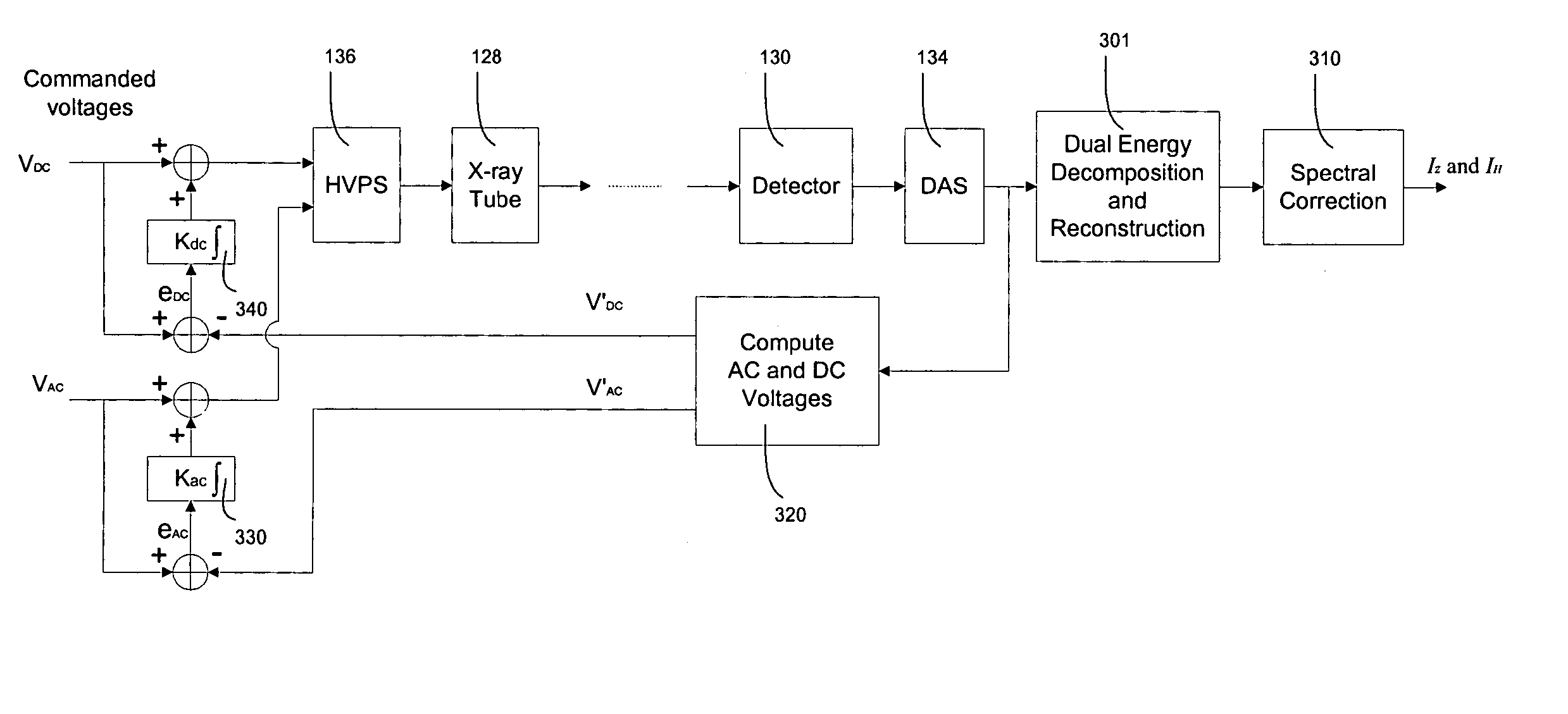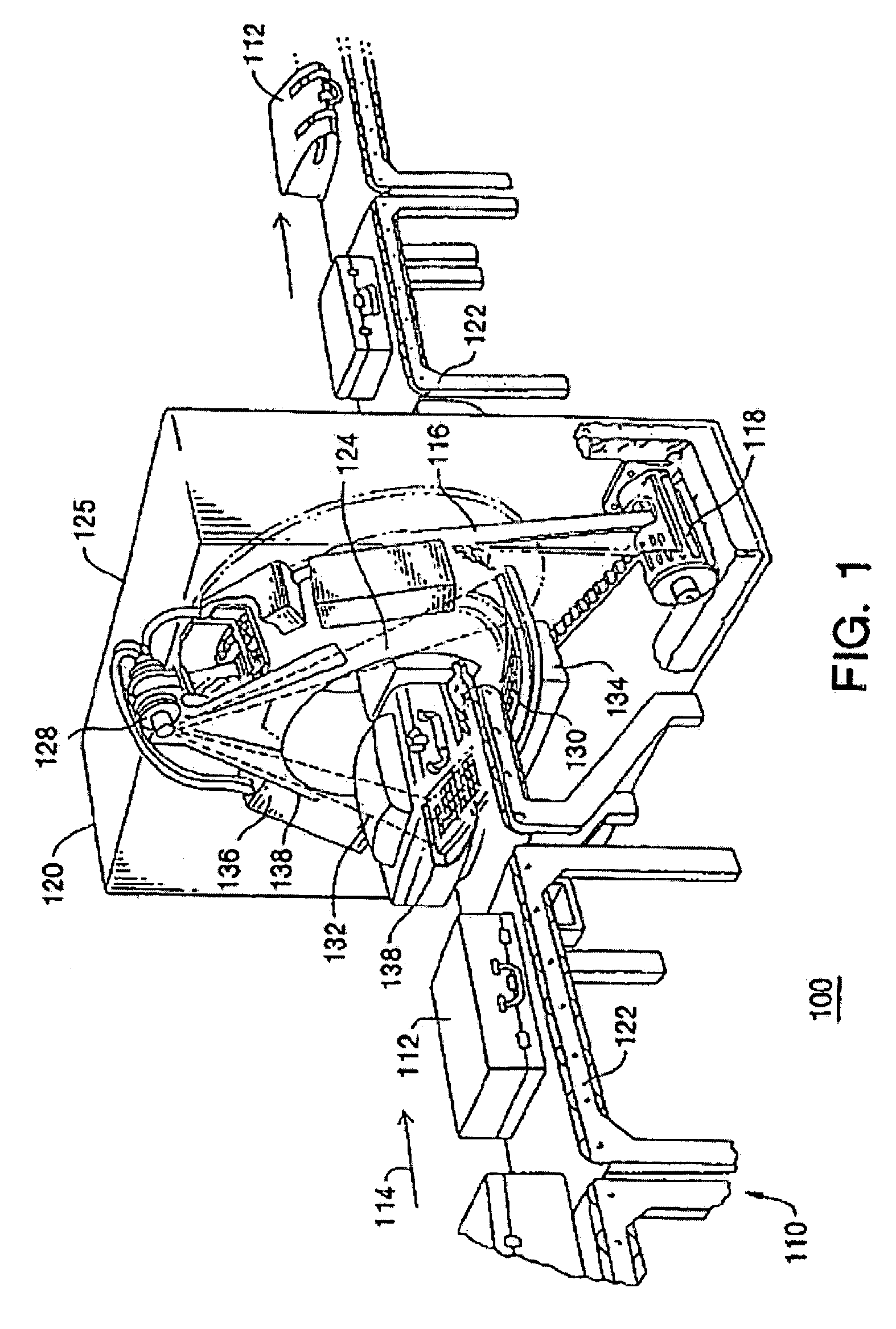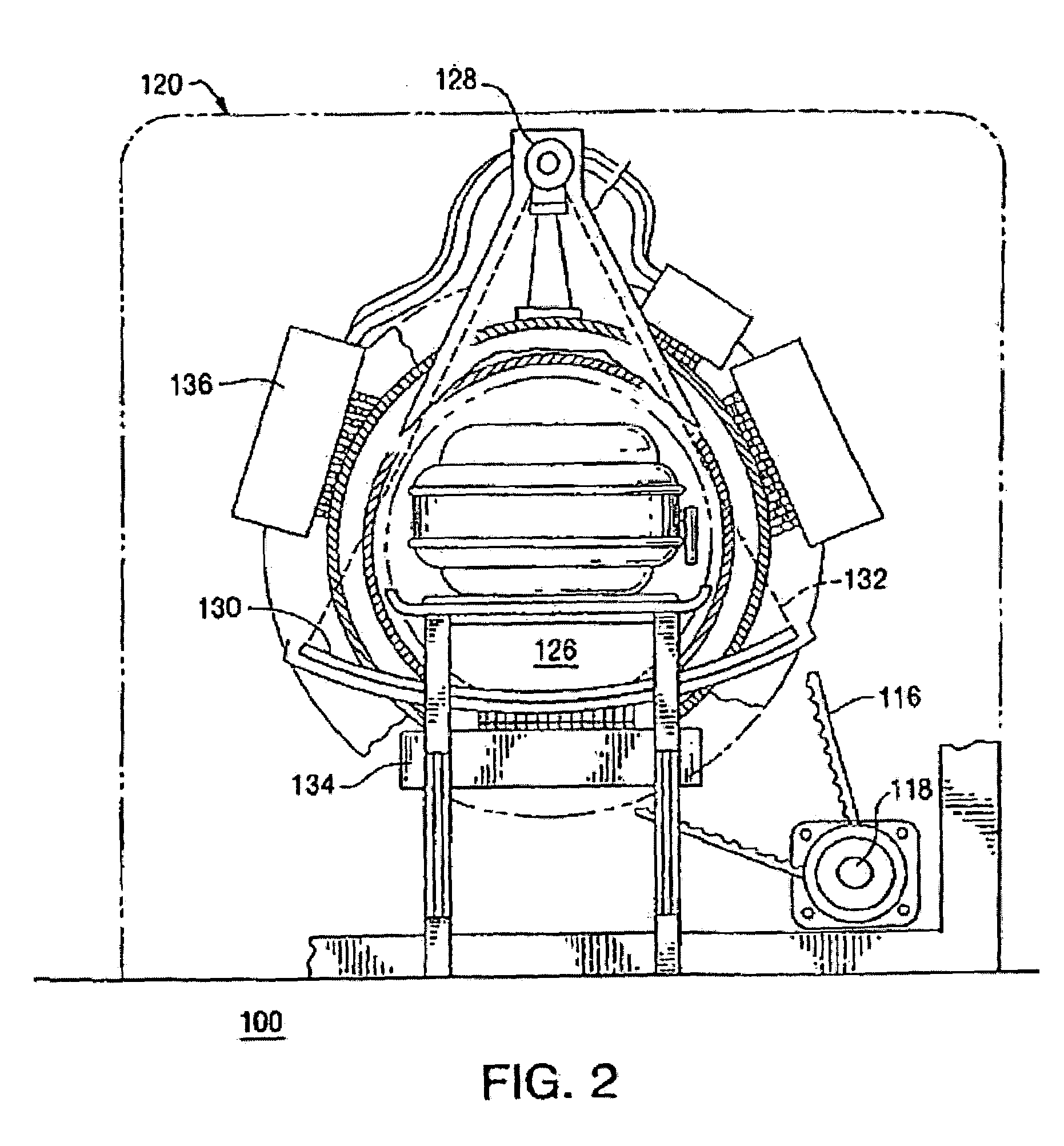Method of and system for stabilizing high voltage power supply voltages in multi-energy computed tomography
a computed tomography and power supply voltage technology, applied in tomography, instruments, nuclear engineering, etc., can solve the problems of plastic explosives, baggage scanning systems are particularly affected, plastic explosives may be formed into geometric shapes that are difficult to detect, and plastic explosive detection is difficul
- Summary
- Abstract
- Description
- Claims
- Application Information
AI Technical Summary
Benefits of technology
Problems solved by technology
Method used
Image
Examples
Embodiment Construction
I. Feedback Control of HVPS Voltages
[0084]In accordance with the present disclosure, a preferred algorithm for stabilizing HVPS output voltages for dual-energy CT scanners is provided. The X-ray tube generates beam(s) of the high-energy and low-energy X-ray spectra, which are determined by the DC (Direct Current) and AC (Alternating Current) voltages supplied by the HVPS (High Voltage Power Supply) to the X-ray tube. The HVPS produces the following voltage,
V=VDC+VAC sin(2πft)
[0085]wherein VDC is the DC voltage, VAC is the AC voltage (more accurately the magnitude of the AC voltage, but for simplification the AC voltage is hereinafter referred to as VAC), and f is the frequency of the AC voltage, the latter being equal to the product of the disk rotational speed and number of views per rotation. The DC voltage and AC voltage are optimally chosen so that the reconstructed Z image yields the highest SNR (Signal to Noise Ratio). For example, in the assignee's commercial scanner system s...
PUM
 Login to View More
Login to View More Abstract
Description
Claims
Application Information
 Login to View More
Login to View More - R&D
- Intellectual Property
- Life Sciences
- Materials
- Tech Scout
- Unparalleled Data Quality
- Higher Quality Content
- 60% Fewer Hallucinations
Browse by: Latest US Patents, China's latest patents, Technical Efficacy Thesaurus, Application Domain, Technology Topic, Popular Technical Reports.
© 2025 PatSnap. All rights reserved.Legal|Privacy policy|Modern Slavery Act Transparency Statement|Sitemap|About US| Contact US: help@patsnap.com



